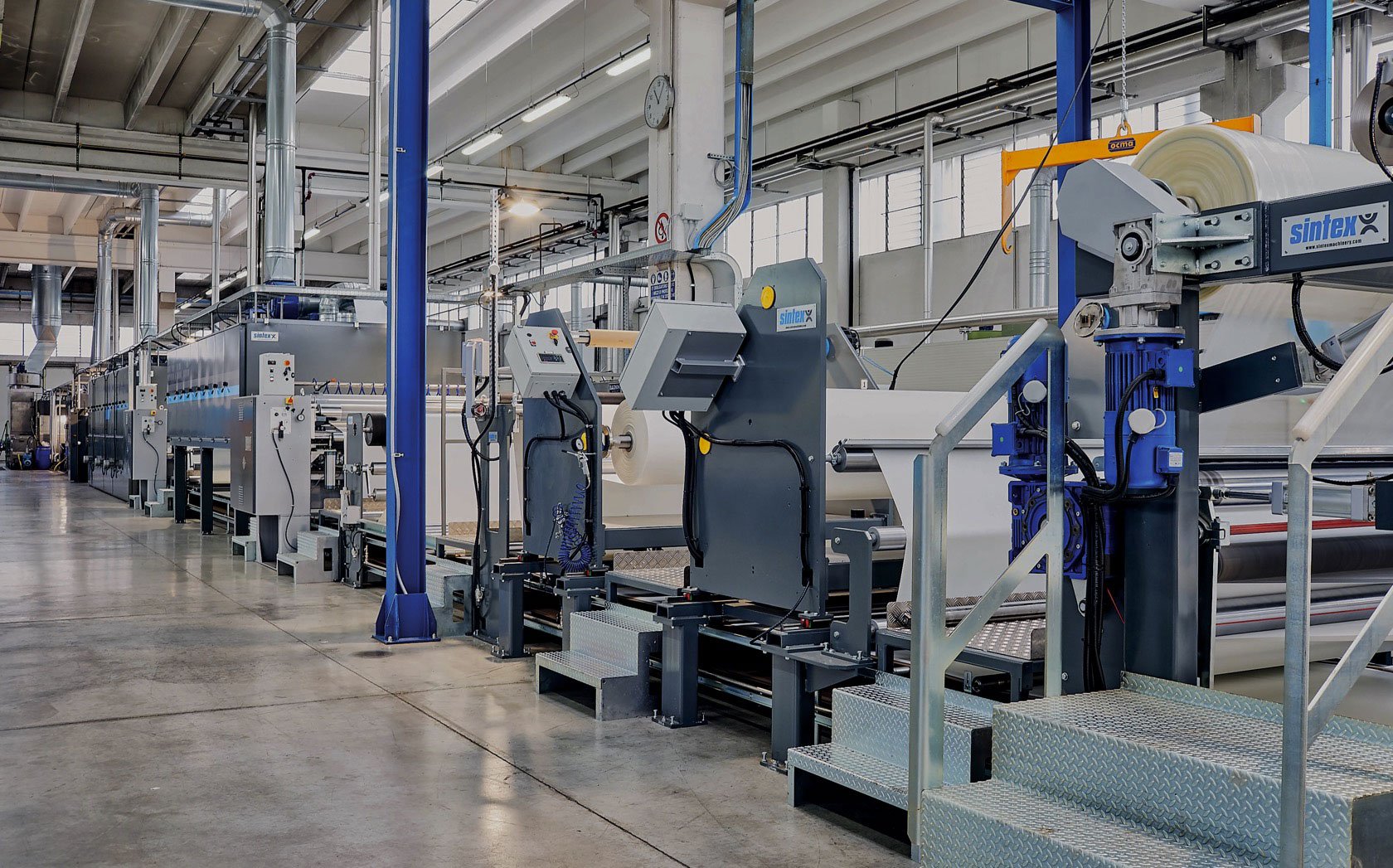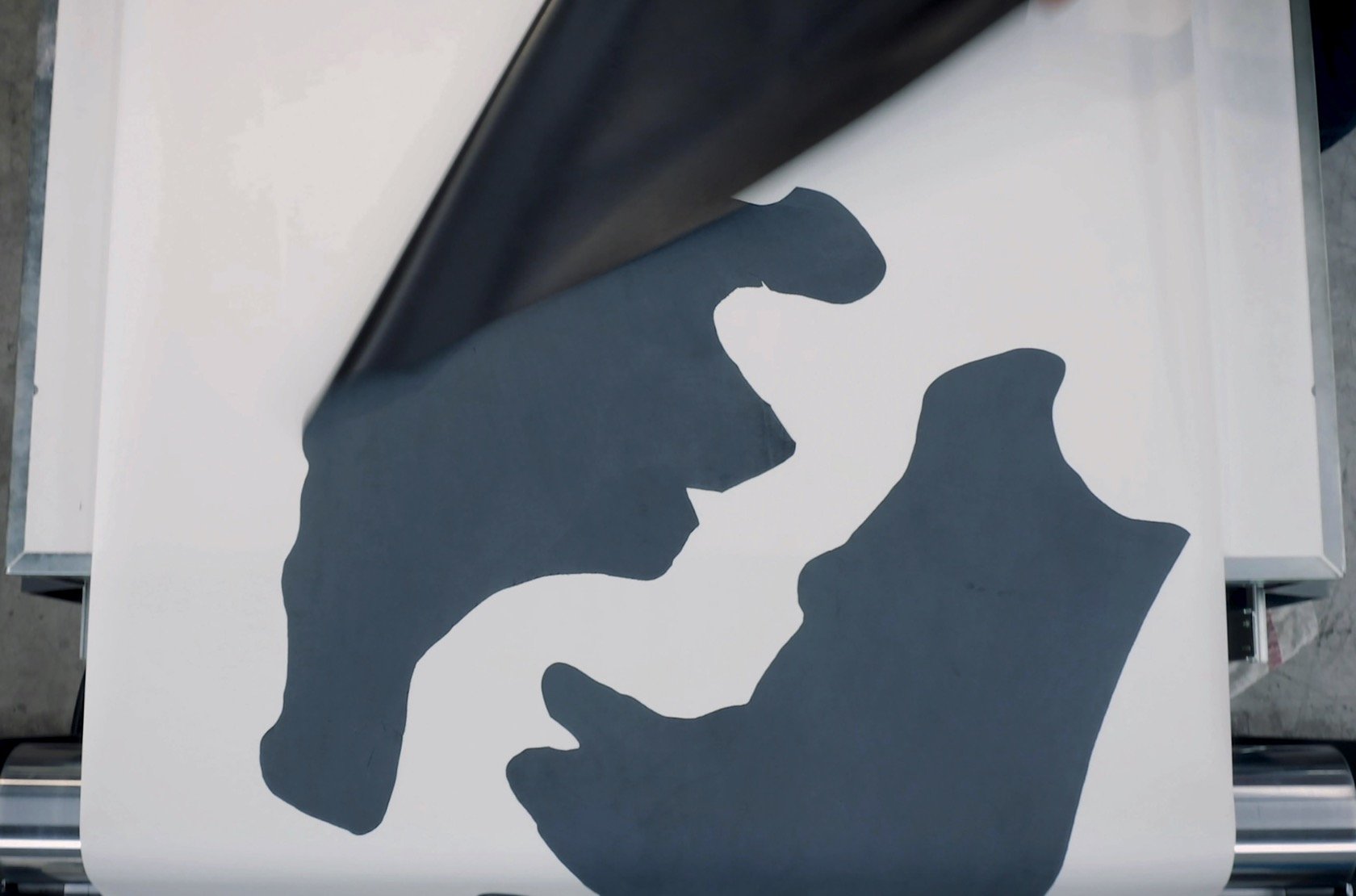Established in 1996 from an idea of founder Bruno Griffante with his sons Giuliano and Giancarlo, Sintex is a leading company in the field of leather finishing, and in particular in the design, construction and assembly of industrial plants for the finishing treatment of synthetic leathers and technical fabrics. Giuliano Griffante explained the history of the brand and its new strategies.
“Everything started,’ he tells us, ‘from my father Bruno’s long experience in the production management of textile machinery companies. As early as 1965, he held the position of production manager in the textile machinery branch. Since then his passion has grown, leading him in 1973 to broaden his field of interest and action and become the owner of a company for transfer coating machinery on siliconised paper for technical textiles. From here the idea of creating an innovative company specialising in the finishing of technical fabrics and imitation leather was conceived and evolved, and Sintex was the answer.
Sintax has always focused on supplying special machines for resin coating, impregnating and laminating fabrics and textiles, and on release coating for PVC and Pu. Over the years, we have expanded our production field towards new leather finishing systems, stimulated also by the presence of the Arzignano tanning hub nearby (Sintax is based in Brendola, Vicenza). This has led us to develop a real sector, that of leather finishing, using transfer paper, a special type of paper designed to transfer coloured prints onto garments and accessories.
Our focus on research and development has always allowed us to be at the forefront of the industry, anticipating market demands and offering innovative and technologically advanced solutions tailored to the needs of our clients. We are constantly striving to ensure the highest quality of our equipment and to offer a comprehensive support service. We believe in continuous innovation and collaboration with our customers to overcome industry challenges and achieve excellence.”
What are your current priorities?
“Right now, we are working to consolidate our brand and confirm our leadership as a quality company, a leader in the field of using paper for leather finishing. To do this we have to work, and work well, with dedication and professionalism. We are aware that we are up against fierce competition, but it is important for us to follow, without ever losing focus, our guidelines of quality and innovation, at our own pace and in the best possible way. We don’t chase anyone, we try if anything to be ahead of others.”
What are the main challenges the market poses to your business?
“The most important challenge for us is to make the potential customer realise the advantages of our paper finishing system. A system that is faster, cheaper and less invasive than the traditional method. The customer is accustomed to thinking that paper alters the original leather too much, whereas our Sintleather system manages to imitate the pattern of the full grain with a minimum thickness of chemical product, guaranteeing great respect for the original product. For example, if on average, with the traditional method, the thickness of the coating layer – which is applied on the surface of the leather to give it the desired colour, appearance and properties – is 22/23 microns, and with the traditional paper of 80 microns – an invasive system, which completely covers the leather and hides its fibrous structure – with our method we can work with a thickness of 25 microns, so as to respect the original leather and enhance its full-grain design. Furthermore, with the Sintleather system we work with a single step at a speed of 5/10 metres per minute, whereas the traditional method, with its several steps, is much slower.”
What are you focusing on at the moment?
“We are encountering an increasing demand for machinery to be positioned in confined environments and spaces, and we are working to meet this need. Already a year and a half ago we created the compact line, which is of great value both for the aforementioned space problem and for productivity in this small space. This line takes up less space, while retaining a production capacity to meet customer requirements. To give you an idea: our normal plants have a production capacity of ten metres per minute and can produce 1800 mezzine hides (bovine hides cut in two lengthwise) in an eight-hour shift; with the compact line we have reduced the production capacity to 4/5 metres per minute, but we can still produce 600/700 mezzine hides in an eight-hour shift, which is a sufficient number to meet market demands without compromising in any way the quality or ease of use of the machine; elements that are among our main specialities. The compact line has the advantage of being easy to use and maintain, compared to normal systems. At the touch of a button, production starts. This is no small detail, if we compare our offer with that of our competitors. People in the industry often speak of difficulties in the use of the machinery, which greatly reduce the productivity of the plants.”
Sintex also stands out in the industry because of its ability to offer customised and innovative installations that meet the different needs of clients. Is this correct?
“Correct. This achievement is the result of close cooperation with both synthetic and leather companies, which allows Sintex to know their requirements and meet them with tailor-made solutions. Ours is a small but extremely dynamic company, which concentrates on a few but important orders and knows how to enhance the quality of the end product. Customers greatly appreciate this working philosophy, which makes Sintex a reliable and competent partner.”
What is new on the way?
“We are working on a parallel line, the PRO, the line of excellence, which is designed for high productivity. We have already made one prototype.”
What are its characteristics?
“Reliability, versatility and easy to use. Linea PRO is a coating line for synthetic leathers and technical fabrics with a high production capacity and superior quality, designed to meet the needs of customers who demand high-level production, innovative design and advanced technology. The machine has one or two coating heads, which allow the chemical to be spread onto the transfer paper to create a homogeneous weft that reproduces the design and quality of the leather. It is a fast, high-performance machine: our customers can easily work at a speed of 8, 9 or even 10 metres per minute. Technically we could go up to 13 metres per minute, but it would be difficult to handle the incoming and outgoing leathers.
Both after coating and laminating, the skins are dried at a low temperature with a long residence time in the ovens. This results in a product that is always soft and respects the natural oils in the hides. If too high a temperature were used in a confined space, the leather would dry out and lose its soft characteristics.
As mentioned, we always try to improve, through constant study and research, the result of the product. We take pride in achieving this every day.”
www.sintexmachinery.com


Giuliano Griffante e Alessandro Pizzeghello

